1, Wokuotai period of Han Dynasty, Hezhong, and eastern Persian regions
In the autumn of 1229 AD, the Mongolian clan and nobles held a Hulu Neighborhood Conference in Qudiao Alan on the banks of the Qerulian River, honoring Genghis Khan The Third Ziwo Kuotai was Dahan, who was Taizong. Although later Mongolian historians tried their best to describe Ogedai as a benevolent and generous ruler, the fact is that Ogedai's first priority after taking power was to expand the strength of his branch to suppress his brothers' desire to covet the throne. . In the third year of Emperor Taizong's reign (1233), Wokuotai ordered his son Guiyu and other kings to attack [Eastern Xia Kingdom] at their own command, and then "they looted and conquered it." And dispatched a man named "Tanggu (Ti) Batu'er" to lead the Tanma Army to guard the place. Perhaps Wokuotai's move was an unauthorized change of the profit distribution plan previously negotiated between tolei and the kings of the clans, which caused quite a bit of controversy. The subsequent developments also showed that the Great Khan family directly controlled the invasion and foreign affairs of Great Mongolia against Goryeo . "Historical Collection " records: "Everyone who was dissatisfied and criticized this matter was forced to remain silent after Hehan came to the throne." The second son, Kuoduan, went to in 1235. Liangzhou formed its own Uluse based on its Hexi seal. Wokuotai used various means to ensure that his branch could occupy a larger share in the distribution of interests, so it was inevitable that he would be criticized by his clan members. Great Khan The first thing to be weakened is undoubtedly Tuo Lei, who has the status of the youngest son of a guardian and has been acting as a vassal for a long time as a supervisor of the country. Rashiduddin said that Ogodei had intended to have his son Guiyou adopt Tolei's widow and instigated Luheteni, but the latter objected and gave up. According to the old Mongolian system, after the death of each king, his eldest wife would manage the land and people on his behalf. Therefore, Wokuotai was the one who wanted to annex the Ulusi tribe under the name of Tolei in the name of succession. Later, "[Ogedai] without consulting his clan relatives, without authorization gave two thousand households in Sundus belonging to the entire army of Tolei Khan and his sons to his son Kuaduan" . At this time, Soluheteni showed extraordinary political wisdom and repeatedly persuaded the generals who expressed dissatisfaction to obey Hehan's orders, and finally calmed down the incident. Chinese historical materials also leave records that the Tuolei faction was invaded by Hehan. Aotun Shiying, the Jurchen general who surrendered to Tuolei, experienced "conquering the armies of the four kings from the emperor" and fought for many years, and was deeply loved by him. Tuo Lei once said to his wife: "My eldest brother [Aotun Shiying] is my beloved, you should not treat him as a captive." However, when Taizong, Wokuotai ordered him to be the governor of Hezhong, he wanted to take the opportunity to send him to another department. The public [Aotun Shiying] reported: "My name has been in the four princes' palaces for many years, but now it belongs to another department. How can I see the Tang concubine's son and mother?" He became angry, and Xu Fuxi said: "That's what you said. " This dramatic dialogue shows Ogedai's step-by-step advancement and the painstaking dealings of subordinates loyal to the Tolei family. This is also a sign that after Tuo Lei died suddenly in his prime, his family's power declined and he had to endure for survival.

In the third year of Emperor Taizong's reign (1231), Wokuotai Khan "took Yelv Chucai as the Zhongshu Ling, bonded Zhongshan as the left prime minister, and Zhenhai as the right prime minister" , and formally established the middle school in the Mongolian Khan Court imitating the Han system. The book province manages the common government and initially shows the characteristics of centralized system . He also established a province in Pingyang Road , which was the most densely populated area in the conquered San Francisco territory, and ordered Hu Tianlu, who was formerly a servant of the Great Khan (think of him as Bijachi and the like), to "go to Hedong, the prime minister's mansion", open a mansion and recruit Confucian scholars. scholar. Hu's function was the same as that of Bichachi who was sent to various conquered areas under the rule of the Great Mongol Kingdom at that time. He was responsible for promptly and accurately transferring the wealth collected from the settled residents to the Khan for use as rewards or military supplies. However, the Pingyang area used to be Jochi's sphere of influence, so this move also had the intention of the Khan directly managing the place through his agent. In the Transoxiana region, the Great Khan also continued to infiltrate his agents into Jochi's sphere of influence. As recorded in the "Historical Records of Yeli", Yanzhi Jiji Nayan was initially appointed as the military and civilian general manager of Khorasan , Turkestan, Shabulgan and Afghanistan, and appointed various ministers and secretaries to assist him in management. Referring to the "History of Vasav", the banquet was exactly the head of the thousand family under the throne of Shuchi.However, when Ogodei was in power, the local governor Meli Majid had to deal with various requests for dispatches from Bichachi, who represented Jochi and Hehan at the same time, although Jochi's power still had the upper hand before the 1240s. .
Because Chagatai had resolutely prevented Jochi from interfering with the position of the Great Khan, which allowed Ogedai to successfully ascend the throne, during the reigns of Taizong and Dingzong, the Chagatai family was also given more privileges. In the Han Dynasty, "Since the year of Bingshen (1236), Hedong was divided into two kings, the emperor and his brother, and officials were assigned to them everywhere." , and the Shihou Monk Batu Hao who was originally based in Taiyuan was transferred to Chahetai. And in "At the age of Renyin (1242), the king's brother came to the tent hall of Western Regions Ganxi" . According to records such as the Book of Zhifeni, it can be seen that the original territory of Chagatai started from "the edge of the Aiwu'er land to the edge of the Amu River, including the area in the river" . This area is also called "Turkish Standily". The "Historical Collection" records that during Ogedai's reign, he tacitly allowed Chagatai to turn a part of the [Hezhong] area under the jurisdiction of Yalawachi that originally belonged to the Great Khan into his own Yazhe fiefdom. This was undoubtedly an exchange of interests. the result of. Even in the Yeli area, which does not belong to Chagatai and is far away from the west of the river, under the instruction of the Great Khan, Yesu Mengge, who was the strongest among the Chagatai disciples at that time, also sent his subordinate Bicha Chifansi Dingjian came to the local princes to collect taxes. As a result, the strength of the Chagatai clique has been greatly enhanced.
The situation at that time was: Ogedai gained far more power than his brothers in the Mongolian grassland headquarters, Khorasan, southern Persia and other directions; and he connived at Chagatai's power in the Hezhong area (from the land of Aiwu'er). They expanded from Bian to Samarqen and Phakwara to jointly suppress the influence of Jochi Uluth in the river and the western part of Persia.

2, Shanxi branch of the Wokuotai family
So what was the situation in Shanxi during this period? According to the "History of the Yuan Dynasty·Shihuozhi·Suici", among the four sons of Genghis Khan's wife Bortai Uzhen (Shuchi, Chagatai, Wokuotai, Tuolei), only Shuchi is known to have divided the land. Pingyang and Chagatai were divided into Taiyuan in this area, and this privilege was inherited by subsequent kings during the Mongol period and the Yuan Dynasty. This can't help but make people wonder: since these four sons all participated in the conquest of this region, according to the principle of "equal benefit sharing" followed by the early Uluth enfeoffment of the Great Mongolia, they should each get an independent piece of land. Is it " Are there any gaps in the information contained in "Shi Huo Zhi "? Although we can think that Tuo Lei's land in Shanxi was smaller than his family's, which led to the loss of information when compiling "Shi Huo Zhi". But we also don’t know about Wo Kuotai’s own Han territory. This is even more contrary to reason. Is this really the case?
The research of senior scholars has given us some clues. After studying the fiefdom of Xiaoxue, the descendant of Ogodai's son Kuo, Matsuda Koichi proposed that Xiaoxue inherited the nomadic land in Luzhou, Shanxi from his father, that is, in Bingshen (1236) ) Hou Kuochu has obtained land in Shanxi. And he pointed out in another paper: Tuo Lei's son Hulagu also appointed his own general manager Daru Huachi as his manager in Jiezhou, Shanxi. Can we trace back the dates when these two families were granted land? Recently, Ton Muraoka published a paper on "Right-wing Uluses and Shanxi Province in the Mongolian Era", arguing that the division of Ogedei should be on Xijing Road (renamed Datong Road in the Yuan Dynasty), which is quite refreshing. Muraoka Ton's basis is roughly as follows:
1) The chapter "Shihuozhi·Suihui" does not mention the distribution of civil gifts on Xijing Road at all. It seems to be excluded from the scope of enfeoffment by kings and meritorious officials. Therefore, it can be presumed that he is directly subordinate to the Great Khan.
2) Similar to the close relationship between the Tuo Lei family and the Zhending Shi family, when Liu Bolin died in 1221, his son Liu Heima became the most powerful ally of the Ogedai family.
3) Kuo Chu rested his troops and horses in Xijing before starting his expedition against in the Southern Song Dynasty; this was similar to his brother Kuo Duan who stationed herdsmen in his own Xiliang Prefecture before his expedition to Shaanxi.
4) "Yuan Shi Geography" records that the population of Xijing Road in the early Yuan Dynasty was more than 40,000 households, which was close to Pingyang and Taiyuan. It was exactly ten times the 4,000 households per person under the jurisdiction of the three Wokuotai brothers.
5) After the defeat of Duwa, more than 700,000 surrendered people of the Wokuotai clan were resettled on Xijing Road, which was also a manifestation of this old feudal relationship.
In addition to the points mentioned in Muraoka Tomo's paper, searching the historical records of the Yuan Dynasty revealed many records hinting at the special relationship between the Ogodai family and the Xijing area. For example, "The Chronicles of Taizong" says, "In the third year of Taizong (1231), in the summer of May, I took refuge in the Ninety-nine Springs" ; "In the autumn of August, I was lucky enough to be in the clouds. The Zhongshu Province was established, and the official name was changed to the attendant." ; This matter has a more specific description in "The Story of Famous Ministers": "In the eighth month of Xinmaoqiu, when I went up to Yunzhong, I found the tribute of silver coins from all the roads, and the records of dendrobium and dendrobium in the warehouse. They were laid out in front of me. "The number of Fu Yuanzou." It seems that Wokuotai came to Yunzhong not by chance, but completed a series of official appointments, accounting and other political activities here. "History of the Yuan Dynasty " also contains: "In the fourth year of Taizong (1232), in April of summer, I left Juyong to go to Guanshan to escape the summer heat." From this we can understand why Shihou Jiagu Ming'an replied "After learning about Emperor Taizong, Entering the imperial court in Xijing". This is because Wokuotai always stayed in this area.
Ke Liebu Su Ge was the "Dadalu Huachi of Shanxi" during the Wo Kuotai period. This man also tried to marry a "later" as his wife, and he can be regarded as a pioneer of the Wo Kuotai family. "History of the Yuan Dynasty·Biography of Brother Su" contains: "At the end of the year (1235, the seventh year of Emperor Taizong)... the emperor calmly said to Brother Su: 'I will serve you as an officer in the Western Regions and the Central Plains. It is only you who chooses.' Brother Su paid his respects again. He said: "What a blessing! It's my wish." The emperor said: "The territory of Xishan is to the north of Bada. You can build a building in the city and sit on it so that everyone can look up to you. You can give instructions." Therefore, Gu Buweihu thought that the position of "Dalu Huachi" in Shanxi Province was more prominent in the Mongol Dynasty than in the Yuan Dynasty. Usually, it is the same as "Sheheina" that appears in Persian literature. It is often the highest military and political officer appointed by a certain clan king to guard a certain place and represent its interests. The reason why Wokuotai ordered Brother Su to come to Shanxi was precisely because his family had special interests here.

We can also examine this point from the economic activities in the Taizong era. "Da Yuan Ma Zheng Ji" preserves an imperial edict of Taizong:
On June 24, the fourth year of Emperor Taizong's reign (1232. AC), the imperial edict issued an imperial edict to Tuo Duan Gou Suo and others in Xijing (suspected to be "Tuo Duan Gou Suo and others") ): "That is, I can see the Queyin manger. Except for Dongsheng, Yunnei, and Fengzhou, there are 1,627 households in charge of this road, and each household has a manger. The chief. Five feet, one foot and four inches wide, the same as in Mongolia. Carts and oxen should be prepared everywhere, and they must be delivered to Orudu within the tenth day of the seventh month. If they fail to do so, they will be punished. " In the case of
, this imperial edict was undoubtedly the result of the Great Khan assigning his officials to collect tribute from the Bolanxi population in his territory. And its fashion preceded Taizong's large-scale enfeoffment of clans (i.e., the "Bingshen Enfeoffment" in 1236). The thing requested is a drinking trough for cattle and horses, so this seems not to be a unified levy by the state, but more like the kings' "occasional demands" from the people under their jurisdiction. This can prove that in the fourth year of Taizong, the tributes on Xijing Road except Dongsheng, Yunnei and Fengzhou should be owned by Ulusi of Wokuotaihehan.
Are the three states of Dongsheng, Yunnei, and Fengzhou also part of the Ulusei of Hehan? "Jingshi Dadian Jibun" also records:
In the sixth month of Renchen in the fourth year of Emperor Taizong's reign, he ordered the officials of Fengzhou, Yunnei, and Dongsheng Er (should be "three") Daru Huachi to send felt craftsmen. When he was staying there, he weaved four large felts for Han [O]'s ears.
The nature of this article is the same as the above. Weaving the "O'er big felt" is also one of the obligations of the people under the throne. At that time, the Daru Huachi of the three states should be Saidianchi and Gansiding. Historical records "Taizong ascended the throne and granted [Saidianchi·Gansiding] the capital of Feng, Jing and Yunnei states, Daru Huachi." Another historical data shows that Cheng Junrui, the son of Cheng Yu, who was appointed as the "Chief Craftsman of Xijing" as early as the Genghis Khan era, once "entered the service as an orphan boy and served as a slave to the prince. Account ".In the case of the Great Mongol Empire, the private subordinates of the kings, also known as "Qing Lian Kou", were required to serve a certain king for generations and were strictly prohibited from switching to another place. Therefore, the Cheng family and his son should be affiliated with the Wo Kuotai family. , and "Xijing" should also belong to the Wokuotai family's land. As for the fact that "Xijing" and the three prefectures of Dongsheng, Yunnei and Fengzhou are separated into Daruhuachi, it must be because these three prefectures are on the grain road of "Mobei supply and demand", which is of great political and military significance. That’s why it is separated from Xijing Road.
And recruiting the "powerful people" and religious celebrities in their own territory was a keen interest of the Mongolian kings. For example, the leaders of Quanzhen Taoism, which has great influence in northern Taoism, are often ordered to pray for the great Khans and princes in Yunzhong (Datong). In the year Bingshen (1232), Yin Zhiping, who was the head teacher at the time, "was ordered to test the scriptures in the clouds and save thousands of people as Taoists" . Master Haiyun, the leader of Zen Buddhism in North China, became famous to Emperor Hehan in 1231, "[The emperor's] special envoy A Xiantuo Wu Lian gave him the edict of 'Practice with one's heart and mind freely'" , and thus became a member of Taizong's family many times. Fortunately. "Buddha Chronicles " records:
Yisi (1244) followed the decree of the Six Queens and prayed for the country in Wutai. In Bingwu (1246), according to the order of the Sixth Queen, the army set off, and in the middle of the way, Fengji was doing something. After echoing, I got the order and returned it to Yan. Ding Wei, the emperor came to the throne. He issued an imperial edict and ordered the masters to unite the monks, and was awarded ten thousand taels of platinum. He studied at the Haotian Temple building conference to pray for the country. Prince He Lai Cha invited his master to enter Helin and stayed in Taiping Xingguo Zen Temple.
What is said here is consistent with Lai Cha, the fourth son of Wokuotai. In 1250, after the clan was established, Hai Yun and Monk Minggong were once again called to Xijing for two years. The "Inscription on the Monk Buddha Riyuan Zhaogong Monk of Huayan Temple in Xijing" written by Xiangmai of the Yuan Dynasty said:

Gengxu (1250), Liu Gong, the official of Hulan in Xijing, the governor of Fuyin, and Ying Gong, the main master of Huayan. Shu respectfully invites Master Haiyun to be the abbot of the Huayan Temple. Haiyun invited his master [Ming Gong] to go with him to Yunzhong. Haiyun suppressed his master and became the abbot, taking charge of the temple on his behalf.
In the article, the high-ranking official of Hulan in Xijing who summoned him at the same time was Su Gezi and a retainer of the Wo Kuotai family. And Manager Liu is Liu Heima and Liu Bolinzi. The history of the Yuan Dynasty said "The old man was ugly, and Taizong came to the throne. He established 30,000 households at the beginning, with Hei Ma as the leader, followed by Chongxi and Shi Tianze . He was awarded the Golden Tiger Talisman and took charge of Pingyang, Xuande and other roads. He was still in charge of the army and tens of thousands of households. He was still the Taifu In charge of government affairs, he was in charge of the Han army. ... He was also promoted by Wokuotai.
The above points all show that the Wokuotai family has its own land in Xijing. Similar to the situation in the western part of the great Mongolia , in the eastern (North China) region, the power of the Tuolei family has also been squeezed out. Although Aotun Shiying, who guards He and Jie Prefectures, is a retainer of Tuolei, the members of the Hezhong Prefecture The taxes were collected by the Khan. Wang Yi's "The Monument of the Great Yuan Edict to Rebuild the Salt Lake Temple" contains: "Taizong was the English emperor, and Baidu ushered in a new era. Prime Minister Yelu Chucai, who focused on funding, recommended his ministers Yao Xingjian to be the envoy of salt relief... "Shangdu zoning." and other words, it can be seen that the salt tax revenue at this time was still under the direct control of Zhongshu Province. This also reflects that the influence of the Wokuotai family is gradually extending from northern Shanxi to the south to the junction of Shanxi and Shaanxi.


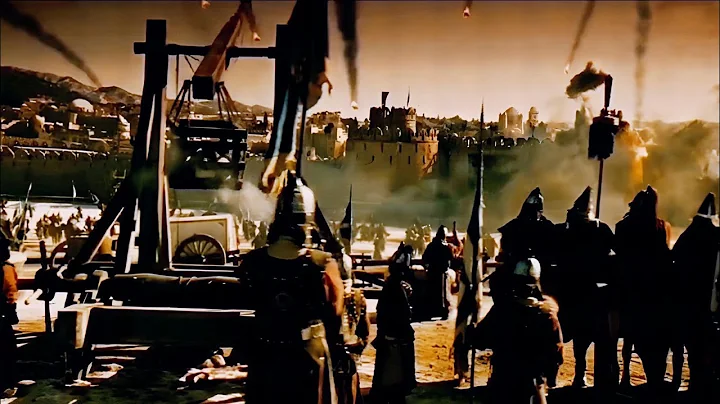

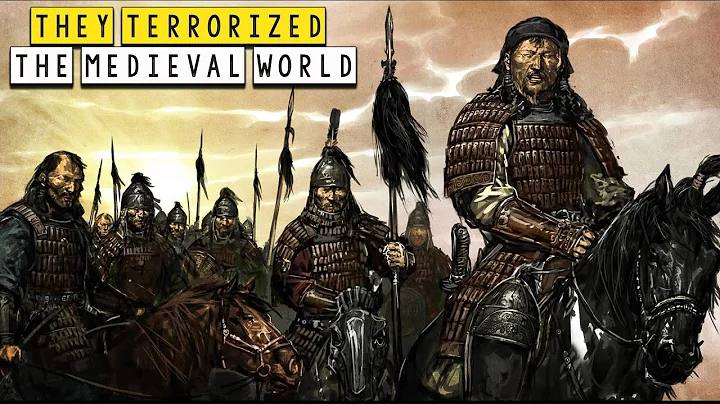
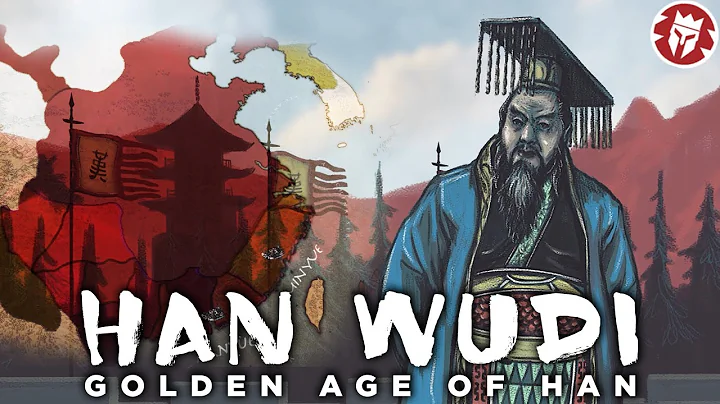

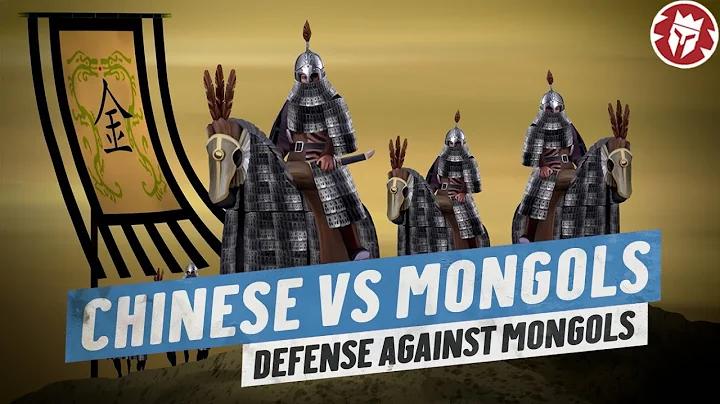

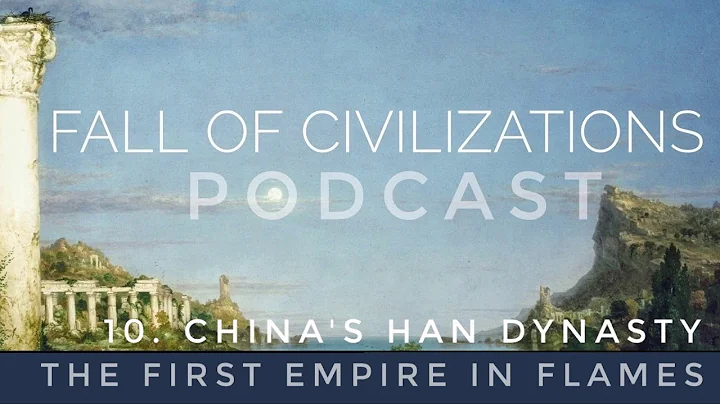


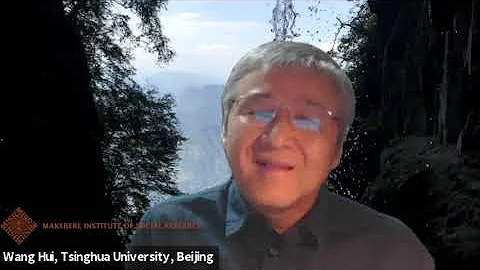





![[FULL] Professor Wang Gungwu: China's reforms - whose way is the best? - DayDayNews](https://i.ytimg.com/vi/9lyxv7NlY4w/hq720.jpg?sqp=-oaymwEcCNAFEJQDSFXyq4qpAw4IARUAAIhCGAFwAcABBg==&rs=AOn4CLBnO7Mxwb11SoPMAX5bBewt_bUhLA)


